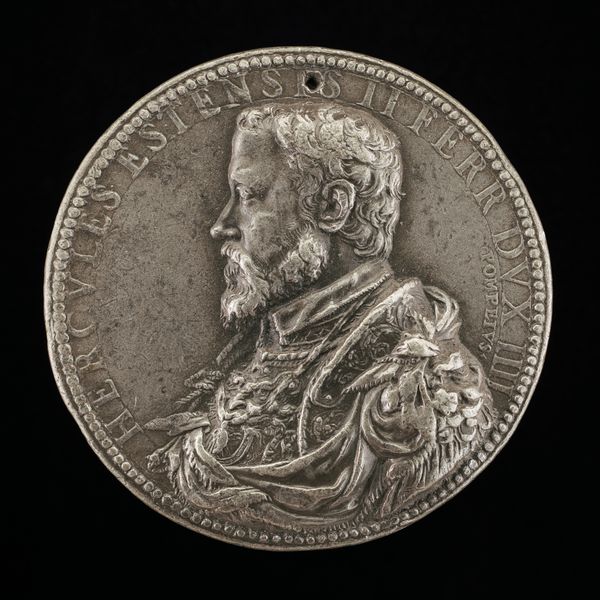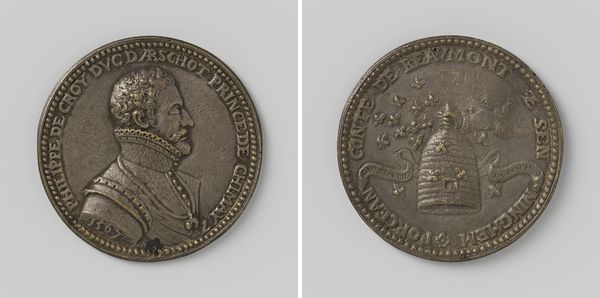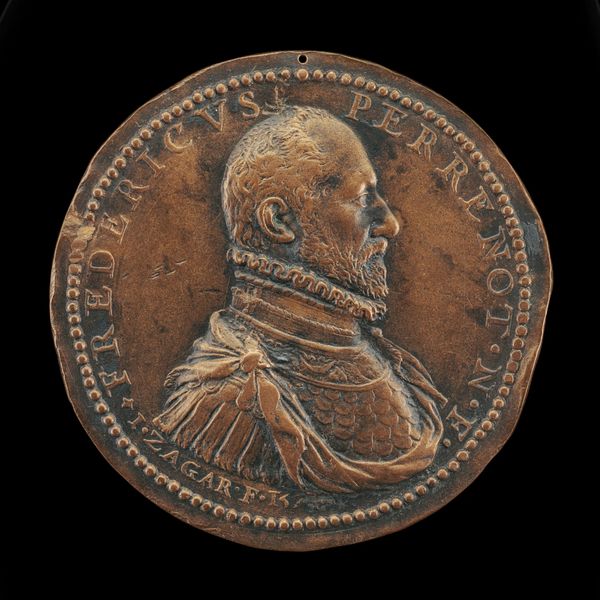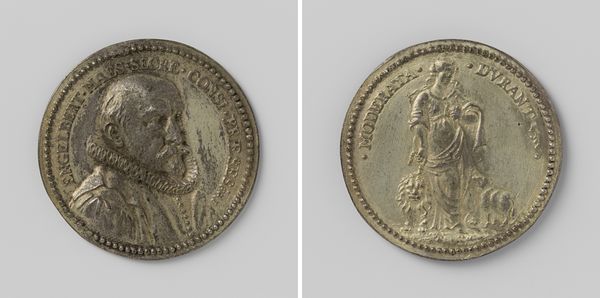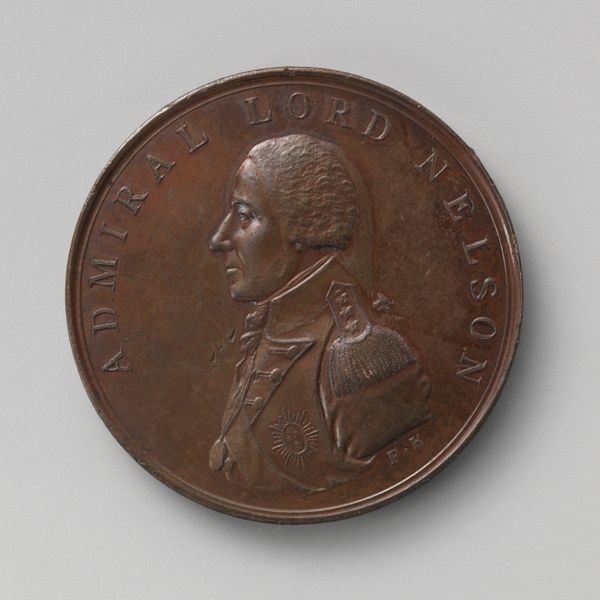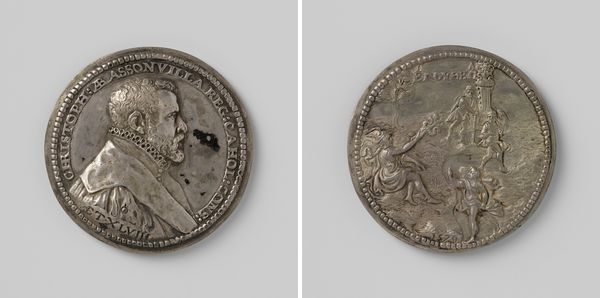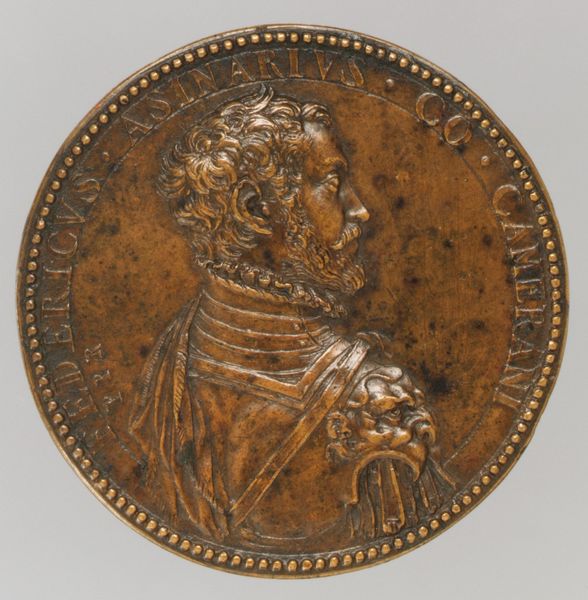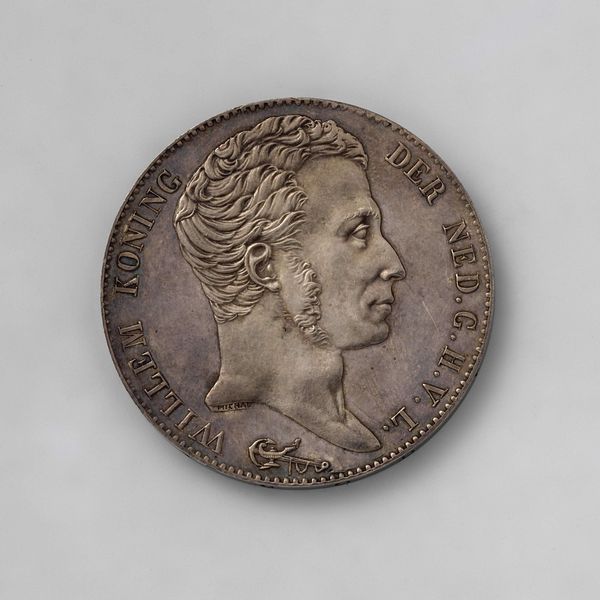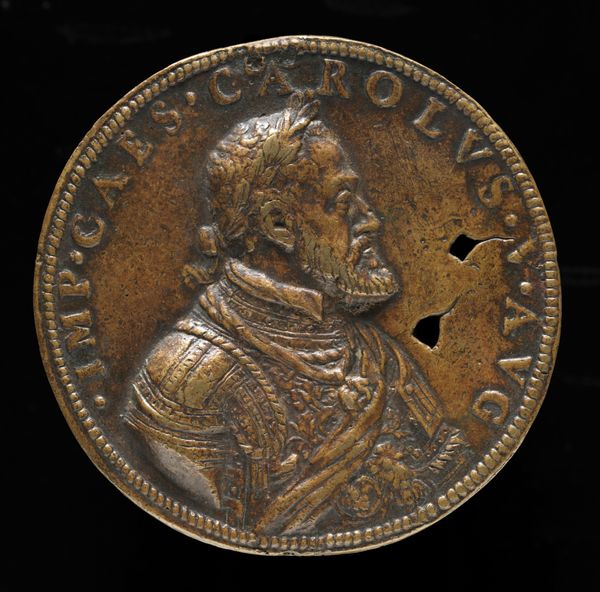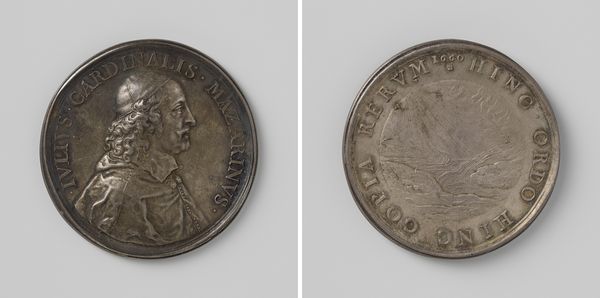
Model for a Medal of Antonio de Ferraris (Il Galateo) 1535 - 1545
0:00
0:00
metal, relief, bronze, sculpture
#
portrait
#
medal
#
metal
#
sculpture
#
relief
#
bronze
#
11_renaissance
#
sculpture
#
italian-renaissance
Dimensions: Diam. 7.1 cm.
Copyright: Public Domain
Editor: Here we have Leone Leoni's bronze model for a medal of Antonio de Ferraris, or Il Galateo, dating from around 1535 to 1545. I find it so interesting how the metal seems almost soft, like clay. What strikes you about it? Curator: The materiality of this bronze, particularly as a model, speaks volumes. We must consider bronze not just as a final aesthetic choice, but as a medium connected to specific labor practices and networks of resource extraction. Think about the mining, smelting, and casting involved! How does that inform our understanding of ‘Il Galateo’ himself, and the value placed upon him? Editor: That’s a fascinating perspective. I hadn’t really thought about the raw materials. Does the bronze itself carry a social significance? Curator: Absolutely. Bronze, even then, signaled wealth and power. Its durability implies permanence, bestowing a kind of immortality. And as a model, consider its role in the production process – it is not merely a copy but also a site of skill, technique and ingenuity for its maker, Leoni. Think of all the resources needed for Leoni to create this work. It would have been hard. The metal becomes a testament to craft. Editor: So, seeing it as just a portrait misses the bigger picture? Curator: Precisely. By focusing on the means of production, we move beyond simply admiring the likeness to interrogating the systems of patronage and labor that brought it into existence, blurring lines between art, craft, and social status. We should be asking: Whose labor is represented, and whose is obscured, in this portrayal? Editor: This has totally changed how I'll look at bronze sculptures going forward. I appreciate you focusing me on how something is made, rather than just what it depicts. Curator: Exactly! It reminds us that art is never truly divorced from the world of making and material. The how always shapes the what and the why.
Comments
No comments
Be the first to comment and join the conversation on the ultimate creative platform.

